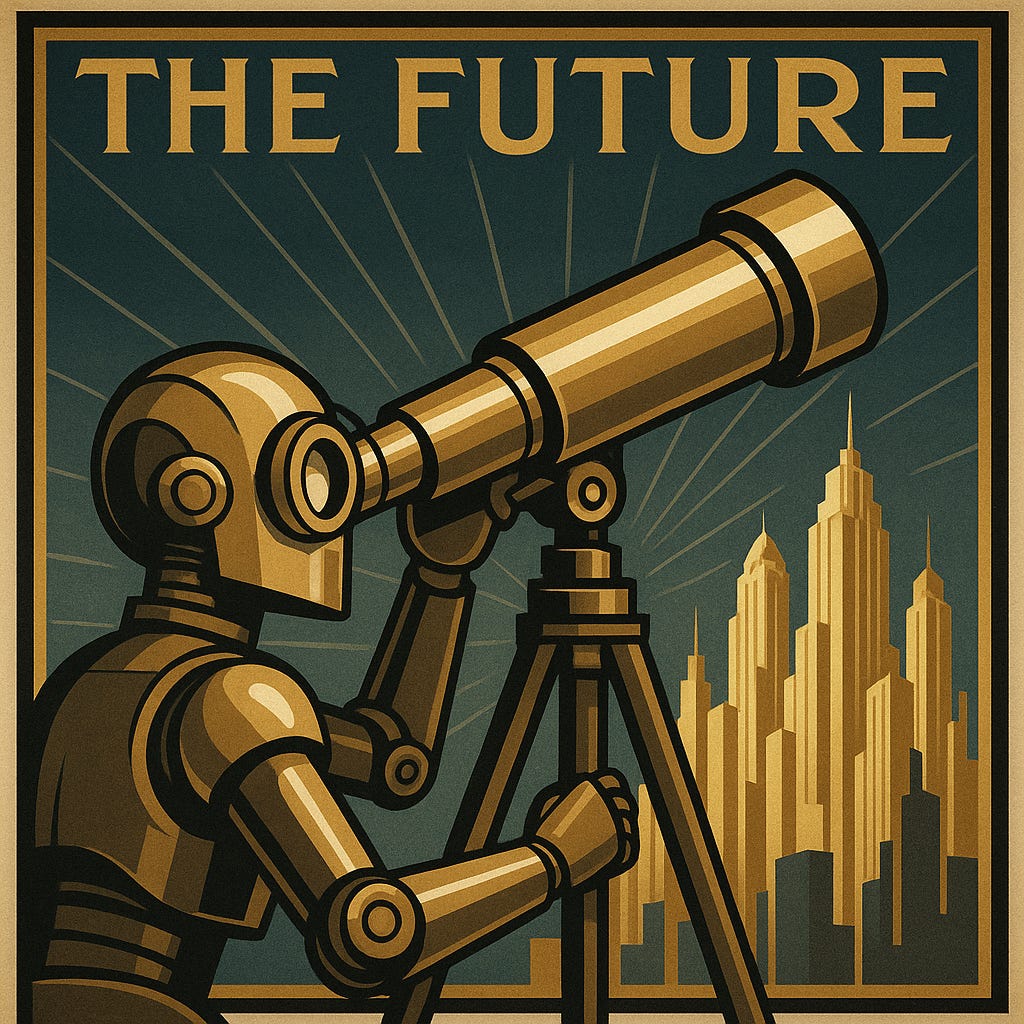The Future Sweep 2025-05-19
Revised radiology futures, the weather and using LLMs to predict dividend cuts with Vanfuard
Dear readers,
This Future Sweep covers revised predictions (checking your predictions is a good habit), weather forecasting and Vanguard’s use of earning call data to predict financial performance. It is a cliché, but AI is both changing the world and changing the way we predict it.
Where did the radiologists go? Oh, they are all still here and the profession is growing! NY Times looks at Nobelprize winner Geoffrey Hinton’s prediction that AI would take over radiologists’ jobs. They did not, and the radiologist departments in some places have grown by more than 50 percent since he made the prediction too. Key insight for futurists: experts underestimate systemic inertia, and overestimate the speed of change - but their forecasts can still be used to identify interesting areas of change: radiologists do their jobs in a different way now.
AI is revolutionizing weather forecasting. May 22nd is a big day for futuristas, as this is the day the Hurricane predictions for the year are revealed. This year AI has played a larger and larger role in making not just those predictions, but in weather forecasts overall. But AI does not replace traditional models, it is is just better at mining the patterns in these models and relies, still, on expert judgment. Key insight for futurists: AI models complement physical models, and still rely on human judgment. Practicing that judgment is a futurists best bet!
Vanguard uses earning calls and AI to predict dividend cuts. This one is massive: “The team used Natural Language Processing techniques to cull relevant dividend discussion snippets from more than 22,000 earnings calls from April 2012 through April 2023 for stocks in the HDYU.” The LLMs listened in, gave their view and improved the traditional models at Vanguard - and they did not even apply obvious tools like sentiment analysis, from what the article shows. Key insight for futurists: everything is now data for prediction! Earning calls used to be a method to extract data from CEOS, but now they are data in themselves. The dimensionality of a data set is always larger than you think.
And a reading recommendation: Olaf Helmer – Analysis of the Future: The Delphi Method. This classic from 1967 outlines the famous method to elicit futures from experts. Want the tl;dr? Here goes:
🧠 1. Foresight as a Collective Intelligence Engine
The Delphi method turns prediction into a structured group dialogue—not a debate, but a recursive refinement of judgments. The surprising twist? It works better without letting the participants talk to each other directly. This undermines the usual faith in meetings and persuasion—Delphi is dialogue by subtraction.
🔄 2. Consensus is Not the Goal—Clarity of Uncertainty Is
Delphi doesn’t aim for agreement. Instead, it uses controlled feedback to map the shape of disagreement. Think of it as a kind of epistemic X-ray: revealing where beliefs converge and, crucially, where they persistently diverge—giving policy-makers a map of the fractures in expert thinking.
⏳ 3. The Future as Iteration, Not Revelation
Forecasts improve not by inspiration but by iterative convergence. Each round of the Delphi process nudges participants to reconsider their views in light of anonymous group feedback, producing more grounded and resilient predictions—not because they are accurate, but because they’ve been stress-tested against others’ blind spots.
Stay tuned for more! And invite more readers to our little community! The more we are practicing future habits, the easier it will be.
Thanks for reading
David & Nicklas





